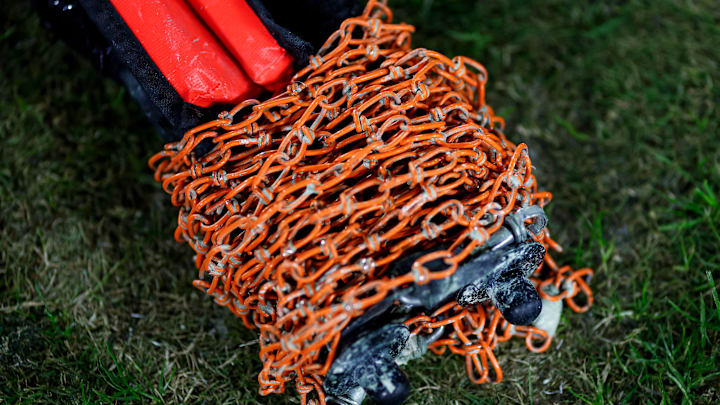Human error has been a major factor on 3rd and 4th downs with minimal yardage remaining, thanks to referees measuring with their eyes (and occasionally a replay camera) to determine some of the biggest and most pivotal plays every week. But that could be a thing of the past with the announcement that the NFL will finally implement a tracking system with a microchip in the ball this upcoming preseason.
The decision was actually made back in March by the NFL's competition committee but wasn't announced until Tuesday that the league could be bringing it to games this season.
Despite this technology being around for years the NFL had only been trying it out in a few NFL stadiums during this past season. Now it's the time for the microchip project to experience the full trial. If the testing goes well that doesn't mean the chain gang will hit the road. Instead, they will be used as reference for fans and sidelines in the stadium and watching from home, as well as a "backup for game operations" if needed.
In the words of Malcom in the Middle's Dewey Wilkerson, "The future is now old man."
After years of NFL fans clamoring for a more accurate way of determining first downs on short plays, it appears that Goodell and the NFL are finally testing out a microchip in the football.
The new system will hopefully measure more accurately on normal conversions but the real shining moment will obviously be during a playoff game or a division-clinching play when momentum swings or iconic plays will be made.
If in-game users see problems or issues that inhibit the game then the move can be tabled until next season. Either way, it's time to prepare for the future in the NFL with many big game moments now feeling and looking like the end of a horse race as you watch the slow-mo camera waiting for a nose to pass over the line.
With the new rule in mind, certain plays and decisions across football came to mind that are both converted and stopped.
One of the most famous and controversial chain gang moments was not actually in the NFL, but rather in the 2013 Outback Bowl. The following play saw "the hit heard 'round the world" which would end up propelling a young Jadeveon Clowney to the top of the NFL Draft
72 days until #collegefootball returns.
— College Football Alerts (@CFBAlerts_) June 16, 2023
Starring South Carolina Jadeveon Clowney massive hit 🍿 pic.twitter.com/pq6icBsuLT
One play that Chiefs Kingdom will forever remember was during a playoff game against the Cleveland Browns when then-backup quarterback Chad Henne made possibly the biggest plays of his career. Officials had to measure the ball after the play which led to an iconic fourth-down call that could’ve made or broken the postseason for Kansas City.
Chad Henne was that dude on this run 😮 #HENNETHINGISPOSSIBLE
— Sports Illustrated (@SInow) January 17, 2021
(via @NFL)pic.twitter.com/U8tXiUZGag
Imagine having the technology to track exactly where the ball reached back in the day in the biggest game of the season, perhaps when the Tennessee Titans' Kevin Dyson nearly put the ball over the endzone line on the final play of Super Bowl XXXIV
20 years ago today, the St. Louis Rams took down the Titans in Super Bowl XXXIV 🏆
— FanDuel (@FanDuel) January 30, 2023
On the final play of the game, Kevin Dyson got tackled ONE yard short of the endzone 🤯pic.twitter.com/DcJQVqGfxc
Hopefully, this new technology will improve the game. If it is implemented for the entire season ahead, the referees will carry less blame as well.
